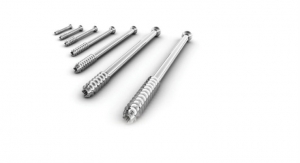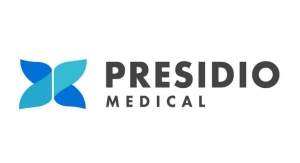Stacey L. Bell01.03.07
Power Up With EMS Outsourcing
Medical Devices Are Benefiting From the Use of More Powerful Electronics and a Wider Range of Services From Outsourcing Partners
Stacey L. Bell
Surging medical costs, escalating demand for care by aging boomers and projected shortages in many healthcare professions could combine to create the perfect storm in the US medical system, many pundits predict.
Not so fast, others soothe. Advances in electronics alone could help more patients achieve better outcomes, with faster recovery times and lowered costs.
“Manufacturing advances are allowing better products that produce better outcomes. Manufacturers are making a real difference,” said Hal Kent, president and CEO of Medconx, Inc. in Santa Clara, CA.
As an example, Kent pointed to how electronics have allowed for huge gains in the operating suite. By using electrical sensing in a device, Medconx was able to help one customer shorten a critical portion of a neurosurgery from 45 seconds to less than one second. As similar advances are applied to increasing numbers of tasks, the amount of time that can be saved in the OR—as well as the ability to treat more patients—magnifies.
| Shown is a close-up of a typical electronic circuit board being hand soldered. Photo courtesy of Genesis Electronics Manufacturing, Inc. |
“Electronics eliminate random processes and allow for specific outcomes,” Kent explained.
He added that one of the biggest changes in the electronics area today is in bringing wire to where it has not been before—in catheters, for example. “The medical device industry is using more and more electrical signals so that devices have more sensing capabilities, allowing for more diagnostics and therapeutics to be included,” Kent noted. “We used to see four wires in a device. Now we see 80 wires, and we have the capability to incorporate up to 1,200.”
During his decades of working for large OEMs, Kent found that 25% of the defects in product design occurred in electrical interconnections throughout the product’s system. Medconx’s process eliminates or dramatically improves hand soldering—lowering system costs while increasing connection reliability.
In addition to increasing signal density and speed, the electronic manufacturing services (EMS) industry also has worked in recent years to improve generators and power supplies. “They’re smart enough now to recognize what is plugged into them, which helps ensure that devices are not reused inappropriately in the marketplace,” Kent said. That is, the power supply can identify a device that is plugged into it, verify that it is set to the correct power settings, read from its stored memory how many times it has been used and determine its allowed life cycle. These capabilities will lead to better treatment results and greater patient safety.
Full Speed Ahead
While EMS companies traditionally served the needs of the computer, networking, storage and consumer industries, medical device OEMs are becoming a larger, more important piece of their portfolio.
“The medical device portion of the electronics contract manufacturing business is growing roughly between 12% and 15% each year—outpacing the overall growth rate for the electronics outsourcing contract manufacturing market,” said Mark Zetter, founder and president of VentureOutsource.com in San Jose, CA. Zetter added that some of the fastest-growing applications include portable diagnostic imaging and at-home monitoring devices such as cholesterol monitors and blood glucose meters.
The medical market is poised to continue delivering double-digit growth to the EMS industry for years to come.
Operators are working on Electronic LCD Panels (near) in a cleanroom. Photo courtesy of Genesis Electronics Manufacturing, Inc. |
More companies should outsource, experts say. Why? “Medical OEMs are at the same flashpoint as PC manufacturers were in the mid-1980s,” explained Scott Mauldin, president of Genesis Electronics Manufacturing, Inc. in Tampa, FL. “They are faced with a booming clientele—the aging population. They can either focus their resources on developing new products and marketing or on expanding their internal manufacturing capabilities. More medical companies are recognizing that their lucrative part of the value chain is in product innovation and marketing, so they are following the outsourcing model like the PC makers did, which created the need for EMS companies to begin with.”
Further, medical devices benefit by incorporating technology developed and refined in other industries. “We’ve had customers come to us because they wanted to leverage our experience in LCD [liquid crystal display] technology and make sure they were making the right choices for their products,” noted Gelston Howell, senior vice president, medical division for Sanmina-SCI in San Jose, CA. By leveraging EMS companies’ expertise, medical device companies can get increasingly useful products to the marketplace faster.
A Solectron employee works for a medical device provider on a mechanical assembly of a liquid chromatography product in Singapore (an area offering a high-quality, low-cost medical supply base and close proximity to Asia markets for customers). Photo courtesy Solectron Corporation. |
To score a quick market debut, more medical customers are asking Jabil for standard, simplified solutions. “People are looking to take advantage of market trends in other industries and capitalize on those. They are working to simplify products so they can use standard components rather than continuing heavy customization,” Allan said.
Zetter recommended that OEM executives ask themselves three questions when determining whether EMS outsourcing should be part of their business model:
1) If starting from scratch today, would you build this capability inside?
2) Are you so good that others would pay you to do it?
3) Is this an area of your business from which future leaders will come?
“If an executive can answer ‘yes’ to one of these questions, there’s a good chance he or she may not want to outsource for strategic reasons,” Zetter said. “Otherwise, it usually makes sense to outsource and engage the contract manufacturer as soon as possible.” The sooner the contract service provider is involved in decisions, the more money and time can be squeezed from the product development, manufacturing and launch processes.
“Often, we can save companies 50% of the total cost of manufacture if they bring us in on Day 1 of developing the product concept and allow us to do our version of DFM [design for manufacturability],” noted Kent, adding that the percentage falls the further the project progresses without outside support. “Later in product life cycles, we save an average of 10 points of margin when we redesign a product, which is still [significant].”
A Changing Paradigm
Today most EMS firms offer design and engineering service to clients. For years, companies have relied on several design models: design for assembly, design for manufacturability and design for testing. Today, some contract manufacturers have added a new “design for” to the list: design for supply chain.
“This is a relatively new concept,” Mauldin explained. “We look at the components customers are specifying and consider the components’ price, lead time and life expectancy.”
With more components facing end-of-life issues themselves (see sidebar on RoHS on page 56), contract service providers are warning customers if a new product could run into trouble in a few years when a leaded component, for example, may no longer be available.
As popular as EMS design services are, even more striking is how much EMS companies have expanded their offerings to meet customer needs. “The most dramatic change on the management side of EMS is how sophisticated companies have become,” Mauldin said. “In the mid-’80s, EMS companies were assembly houses. Today, they are project management lifecycle houses.”
That is, in addition to performing assembly, EMS firms also now design product and build prototypes, perform validations and testing, sterilize, then ship product to customers and offer repair and warranty services.
“We perform repair and warranty work for 60% of the products we make,” Howell said. “We’re focused on doing more forward and reverse logistics, from medical engineering at the outset to customer order fulfillment, hubbing and supply chain development on the back end.”
Such diversification isn’t the sole province of large companies. “While smaller and midsize OEMs may prefer regional EMS providers who are more aligned to their volume needs, they want even smaller companies to be full service,” reported Susan Mucha, president of Powell-Mucha Consulting, Inc. in El Paso, TX. “Product development on the front end is essential, but they also may require post-manufacturing support services such as fulfillment and warranty/out-of-warranty repair.”
More Value for the Money
Howell noted that while some customers only want their outsourcing partner to build a product to supplied specifications, more clients are looking for their partner to add value and take costs out of their products.
“One of the areas where we provide the greatest value is in developing, qualifying and validating supply chains in lower-cost countries, such as China and India,” Howell said. Since materials can comprise nearly 80% of a finished device’s total cost, the savings can mount quickly.
Customers also have embraced Sanmina-SCI’s help in setting the best field replacement strategy. It’s often difficult to determine which repairs and maintenance functions should be performed and for how long into a product’s life cycle. Since EMS companies have been making these decisions for decades for other industries, they feel well positioned to provide good advice.
Of course, that good advice works only if it’s taken. One of the biggest mistakes Mucha sees among medical OEMs that outsource is not following through on their partners’ suggestions. “If you’re going to depend on a contract manufacturer for its manufacturing expertise, it’s important to listen to them,” Mucha said. “If your partner recommends you make a change, take it seriously and follow through on your piece of the commitment—qualifying the part substitution recommendation, etc. The most satisfactory and profitable relationships are those in which customers listen to and follow up on recommended changes.”
One medical OEM that makes diagnostic equipment was happy it followed the recommendations of its outsourcing partner, Solectron, since the suggestion ended up netting the company nearly $600 million annually for several years.
“Outsourcing partners can offer two large advantages to OEMs. We can shorten time to market, and we can extend products’ lives by increasing the end-of-life ramp,” Busch said. He noted that Solectron’s engineering capabilities, coupled with its experience in myriad industries and markets, makes the company see opportunities where others may not.
The aforementioned customer planned to discontinue a particular unit since it was launching a new generation of the device. When reviewing the product, however, Solectron realized that by merely adding a few other features, it would appeal to customers in another market. Therefore, sales continued for several more years, ultimately earning the customer several billion dollars of unplanned income.
Medical device manufacturers also want their partners to add value by reducing the costs they’ll incur over a product’s life cycle. “We perform both design and manufacturing cost reduction services,” said Richard Smith, director, medical programs for Sparton Medical Systems in De Leon Springs, FL. “In fact, we offer cost reduction reviews as a normal course of our business. Our design engineers will review the products we manufacture and make design change recommendations with financial outcomes to our customers.”
More Technology on Tap
Like machinery in other sectors, EMS equipment has experienced evolutionary improvements. The miniaturization of medical devices has driven the development of increasingly sophisticated machines that can place microscopic parts quickly and accurately. “Ten years ago, machines could place 10,000 parts per hour. Today, even mid-speed machines are placing 40,000 parts and higher per hour with greater accuracy and quality,” Mauldin said.
He added that two technology areas are ripe to provide even greater gains for medical products in the coming years. The first is display technology. Cathode ray tube monitors used to be commonplace; however, they take up lots of room in crowded ORs. LCD monitors are relative newcomers, and they consume just half the footprint while delivering colorized, clear graphics, Mauldin said. “I expect them to be integrated into more and more medical products,” he noted.
He also expects ultra-wide band technology (UWB) to be integrated into more products. This wireless technology, which captures signals even through concrete walls, also has frequency sensing capability. Because all viruses have a frequency, in several years this technology may advance to the point in which a device outfitted with UWB could be used to sense at the earliest stages if a virus has invaded a person, allowing for early, less expensive treatment. “This technology could have a huge impact on healthcare,” Mauldin said.
In the meantime, more sophisticated electronics, available at lower prices and in smaller, more user-friendly devices than ever before, will continue making a huge impact on patients’ health and the healthcare system’s bottom line.



























